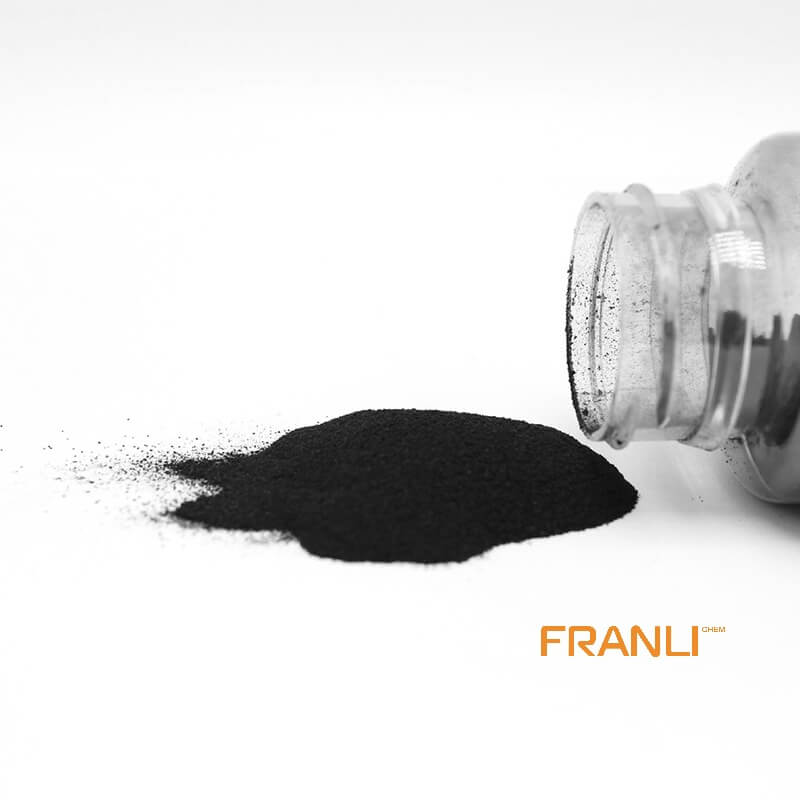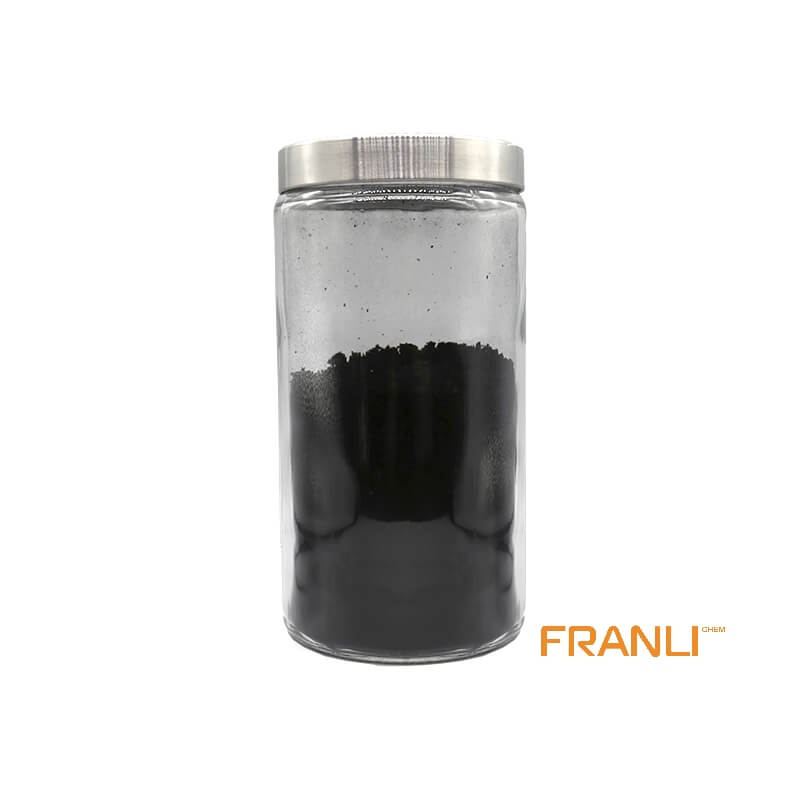

Graphene
Size
1-2nm thick x 0.5-5microns wide
Package
According to customer requirements
Features
High strength, high electrical conductivity, etc.
Application
Can be used as filler(between 0.01% and 5%).
Graphene, as the thinnest, toughest and best conductive nano material found at present. It is a two-dimensional crystal composed of carbon atoms stripped from graphite material with only one layer of atom thickness. Known as “black gold”, it is “the king of new materials”. Scientists even predicted that graphene “will completely change the 21st century”.
Request a quote
Graphene is called a “magic material” because of its excellent properties such as high conductivity, high thermal conductivity, and high strength. It may completely change a large number of applications, such as bulbs, chips, batteries, touch screens, smartphones, and new energy vehicles. Graphene can be competent in countless fields. Let’s take stock of various uses of graphene!

Graphene integrated circuit
Graphene is also considered a material to replace silicon due to its super transmission performance and very good thermal conductivity. Graphene should be the next generation of circuit board material. As early as 2011, a foreign team developed a most advanced “graphene transistor” and integrated the newly studied transistor into a new electronic circuit for the experiment. A few years later, that is, in 2016, some scientific teams in China developed the world’s first “low noise amplifier monolithic integrated circuit” to fill the gap.
Graphene battery
In the production of batteries, graphene is the high-end material that can be used as positive and negative electrodes. Graphene can also be used as a conductive “additive” to increase the efficiency of the battery by adding graphene in the positive and negative electrodes. Generally, the overall efficiency of the battery can be improved. The charging time and charging efficiency of traditional batteries can not be effectively solved, because the development of traditional lead-acid batteries and general traditional lithium batteries have encountered “problems”, and the new graphene battery can break through this limitation. At the auto show, some automobile companies launched graphene lithium titanate batteries, which can realize rapid flash charging in 15 ~ 20 minutes. Graphene batteries can also be continuously charged and discharged more than 50000 times. The average mileage of oil electric hybrid vehicles using graphene batteries is about 900 kilometers!
Graphene touch screen
The key component of the smartphone is a conductive and very transparent touch screen. Due to the extremely good flexibility, excellent conductivity, and outstanding optical permeability of graphene, graphene can be used for the production of mobile phone screens, and graphene is better than indium tin oxide. Foreign research teams have developed a flexible screen composed of many layers of graphene and polyester materials. Using this technology, we can also make graphene batteries, controllers such as touch sensors, flat plates, advanced light-emitting diodes, and other materials.
Graphene super material
American researchers turned soft graphite into a strong “steel bar”. The process is to convert graphene into a three-dimensional structure of graphene foam material, and then strengthen the carbon nanotube materials with strong mechanical properties and high conductivity to make “enhanced graphene”. Researchers in China use tiny tubular graphene to form cellular structure foam. It is as light as a balloon but as strong as metal. In the future, it can be used to make bulletproof vests, tank armor, etc.

Graphene memory
Foreign researchers have been developing graphene storage systems. Why develop this system? Because the graphene-based storage material system has the characteristics of low manufacturing cost, lightweight, low energy consumption, small volume, and large storage space. For example, there is a memory made of graphene titanium dioxide. It is only 55 nm long and 7 nm thick. Reading and writing are almost completed in an instant (that is, 5 nanoseconds). With the continuous development of electronic devices such as touch screens and memory based on graphene, flexible and fully transparent smartphones will become a reality in the future.
Graphene “artificial throat”
As we all know, the human throat can only make sound, but can not perceive sound. If we can have a material that can both perceive and make sound, and have a certain “flexibility”, such as making it an “artificial throat”, we may be able to solve the language problems of muscle atrophy patients like the late scientist Hawking and even some deaf-mutes. In recent years, scientific researchers in China have developed this “acoustic device” by using graphene. It makes sound through a thermoacoustic effect and receives a sound signal through a piezoresistive effect.
Early diagnosis of cancer
Chinese scientific researchers have discovered for the first time that graphene can help in the early diagnosis of cancer. When abnormal conditions occur in the body, the content of nucleic acid molecular biomarker cmocrrna in serum, urine, and saliva will also change, but it is difficult to capture by general detection methods. Due to the strong adsorption of graphene, the detection sensitivity can be greatly improved. Through the comprehensive analysis of the captured cmocrrna, we can get whether the human body has cancer and what kind of cancer it is, which is of great significance for the early diagnosis and treatment of various cancers.
Graphene bulb
Now the traditional incandescent bulb has been gradually replaced by a white LED. Although LED light source has various advantages, the price of an LED light source is relatively high, and rare earth is needed as one of the materials. In Britain, scientists have developed a new type of graphene bulb, which is more robust and cheaper than led and can extend the life of the bulb and further reduce its energy consumption by 10%.
Graphene decontamination sponge
Researchers use the characteristics of graphene “sponge” to remove and adsorb various toxic and harmful substances. The adsorption capacity can reach hundreds of times its own weight. After adsorption, it can be recycled after treatment. Chinese scientists evenly wrapped graphene coating on the surface of an ordinary sponge and used its conductivity, hydrophobicity, and lipophilicity to absorb the oil slick on the sea.
Seawater desalination filter membrane
So far, the cost of desalination of seawater is extremely expensive, and requires a lot of resources, and will cause some pollution to the environment. British researchers are studying relatively cheap graphene oxide filter membranes for seawater desalination. This is a selective membrane that allows water molecules to pass through and filter out salt ions. It does not need high temperature and high pressure, so it is a low-cost alternative to seawater desalination



